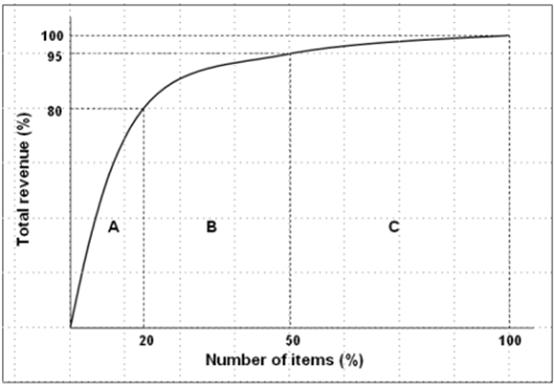Did you know that 43% of small businesses don’t keep track of their inventory? Inventory management is a struggle for most business owners. However, it’s important to have an efficient inventory management system to keep your business running smoothly. Otherwise, you’ll risk making mistakes that can cause permanent damage to your company.
Inventory management is the process of keeping track of stocked goods, monitoring their weight, amounts, dimensions, and location. The goal of having an effective inventory management system is to minimize the cost incurred by holding inventory. You’ll be able to know when to replenish your stocks or buy more materials for your products. However, there are times when small business owners lack the working capital to purchase inventory. When this happens, it’s best to apply for inventory financing. With inventory financing, you can easily access additional working capital to finance inventory purchases.
If you’re looking for new ways to efficiently manage your inventory, here are five tips you need to know.
1. Prioritize Inventory Using the ABC Method
Some of your materials and supplies may need to be prioritized. The ABC analysis lets you prioritize certain products and supplies. This method separates products that need immediate attention from those that don’t. To implement this method, go over your product list and group them into three categories: A, B, and C.
- Item A: Products with the highest consumption value; better forecast for sales (around 70% to 80% of the annual consumption value). The products in this category should have tight inventory control and reorders happen frequently.
- Item B: Products with medium consumption value (around 15% to 20% of the annual consumption value). Owners should monitor the products in this category and determine if it belongs to category A or C.
- Item C: Products with the lowest consumption value; low demand goods (around 5% of the annual consumption value). There’s a tendency that the items in this category are overstocked.
It’s easy for business owners to lose control over inventory and stock. The ABC method lets you regain control over costly products and supplies.
2. Accurate Forecasting
Being able to accurately predict the demand for your products is an important aspect of effective inventory management. This can be challenging, especially for newer companies. There are multiple factors to consider and there’s no way of telling exactly how much you need. However, it’s necessary to accurately forecast your sales. Some of the factors you might want to check out include the following:
- Current trends in the industry
- Last year’s sale during the same day, week, or month
- Upcoming promotions
- Seasonality
- Current economic state
- Definite sales from contracts and subscriptions
- Paid ads
- Annual growth rate
If you don’t know how to make an accurate financial forecast, don’t hesitate to get in touch with a reputable financial advisor. They can analyze your business and create a more precise forecast.
3. Implement the FIFO (First In, First Out) Approach
If you sell perishable items like food, dairy products, produce, and flowers, you can manage your inventory using the FIFO method. With the FIFO approach, the oldest products in your inventory should be sold first. Nonperishable items can benefit from this method as well because if your items are sitting around for too long, it may get damaged or become unsellable. To implement this approach in your storeroom or warehouse, make sure to add newer items from the back so that the older products are on the front.
4. Track Your Inventory Regularly
Before inventory management software was invented, businesses often keep track of their inventory periodically. Business owners often do regular stock takes and constantly monitor inventory data. Thanks to the advancement of technology, inventory management software make inventory tracking a breeze.
Business owners can easily monitor inventory levels, as well as the cost of goods and sales performance. They can access their inventory in real-time since the stock count is automatically updated every time inventory is moved in and out of the warehouse. Cin7 and Ordoro are one of the best inventory management software in the market, according to business.org.
5. Store Stocks Properly
As a small business owner, it’s easy to put your inventory wherever it fits. However, this makes it harder for you to track your products as your business grows. It’s important to be as organized as possible, regardless of the size of your inventory. In this way, you’ll prevent making errors in business which can cost a fortune. Additionally, make sure your staff members are familiar with how your inventory is organized. You can create guidelines and manuals to help them navigate through your inventory.
Manage Your Inventory with Inventory Financing
Creating an efficient inventory management system helps you keep track of your inventory and sales. With proper inventory management + inventory financing, you’ll be able to take your business to the next level.
- Why Party Bus Are Becoming The Talk Of The Town? - January 7, 2021
- How to Provide More Flexibility for Your Business Operations - September 14, 2020
- How Do Cybersecurity Professionals Investigate Threats? - August 22, 2020
- Shopping For Clothes That Give You A Slimmer Look - July 29, 2020
- Emergency Ventilator May Save Lives of COVID Patients - July 22, 2020
- Enjoy these Top 5 Nintendo Switch Games (and more) with JustLoveE-Gifts - June 24, 2020
- Guide on How to Save Money on Flower Delivery - May 29, 2020
- Morning Routine That Will Improve Your Health - May 27, 2020
- Why Healthcare Innovation is Vital to the Industry - May 22, 2020
- Mapping out the Future: What Should Be Your Top 5 Priorities When Starting a Family? - May 12, 2020





